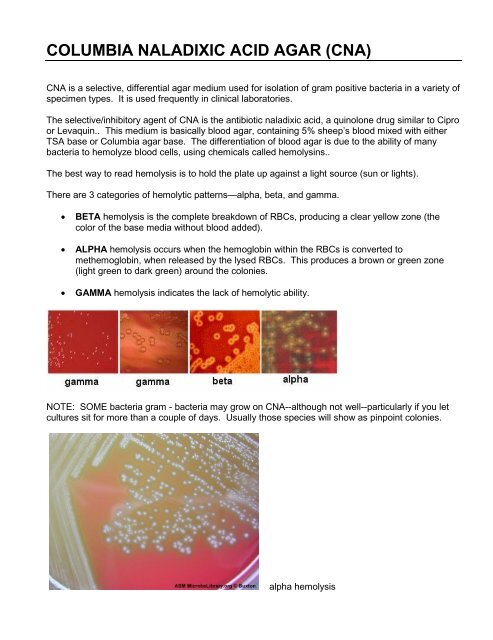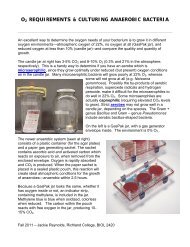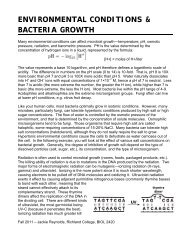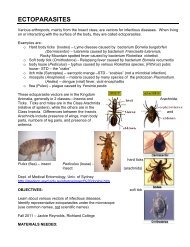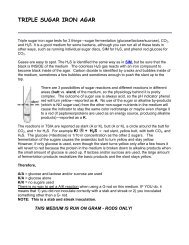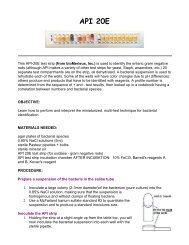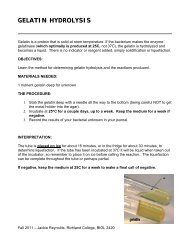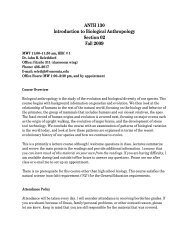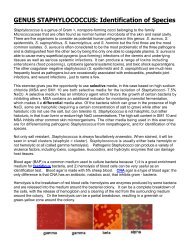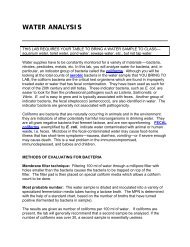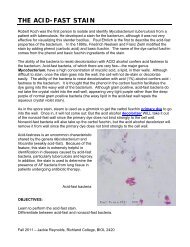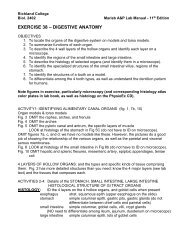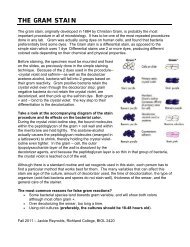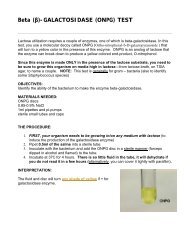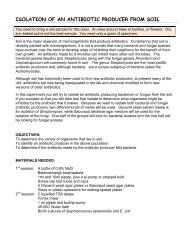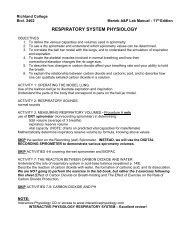Create successful ePaper yourself
Turn your PDF publications into a flip-book with our unique Google optimized e-Paper software.
<strong>COLUMBIA</strong> <strong>NALADIXIC</strong> <strong>ACID</strong> <strong>AGAR</strong> (<strong>CNA</strong>)<br />
<strong>CNA</strong> is a selective, differential agar medium used for isolation of gram positive bacteria in a variety of<br />
specimen types. It is used frequently in clinical laboratories.<br />
The selective/inhibitory agent of <strong>CNA</strong> is the antibiotic naladixic acid, a quinolone drug similar to Cipro<br />
or Levaquin.. This medium is basically blood agar, containing 5% sheep’s blood mixed with either<br />
TSA base or Columbia agar base. The differentiation of blood agar is due to the ability of many<br />
bacteria to hemolyze blood cells, using chemicals called hemolysins..<br />
The best way to read hemolysis is to hold the plate up against a light source (sun or lights).<br />
There are 3 categories of hemolytic patterns—alpha, beta, and gamma.<br />
<br />
<br />
<br />
BETA hemolysis is the complete breakdown of RBCs, producing a clear yellow zone (the<br />
color of the base media without blood added).<br />
ALPHA hemolysis occurs when the hemoglobin within the RBCs is converted to<br />
methemoglobin, when released by the lysed RBCs. This produces a brown or green zone<br />
(light green to dark green) around the colonies.<br />
GAMMA hemolysis indicates the lack of hemolytic ability.<br />
NOTE: SOME bacteria gram - bacteria may grow on <strong>CNA</strong>--although not well--particularly if you let<br />
cultures sit for more than a couple of days. Usually those species will show as pinpoint colonies.<br />
alpha hemolysis
Beta hemolysis<br />
A GOOD resource for pictures… http://microbelibrary.org/component/resource/laboratorytest/2881-blood-agar-plates-and-hemolysis-streptococcus-and-other-catalase-negative-grampositive-cocci<br />
Fall 2011 – Jackie Reynolds, Richland College, Biol 2421<br />
2


